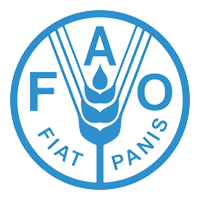Consortium approach for capacity building in watershed management in Karnataka, Rajasthan and Uttarakhand : experiences and learning
The Comprehensive Assessment (CA) of watershed programs in India undertaken by the ICRISATled consortium showed that large scope exists to improve the impact for 66% of the watershed projects by addressing the issues of productivity enhancement, technical back stopping, collective action, improving community participation, diversification of systems and targeted income-generating activities for women and landless sections of the community. The CA also identified poor capacity building as the weakest link for achieving the impact as well as for scaling-up the benefits from the exemplar watersheds in the country. Participatory management of natural resources in the watersheds was adopted as the best approach for sustainable management of natural resources in the rain-fed regions by adopting consortium approach. The consortium approach for integrated watershed management involved holistic farming systems approach and called for convergence of interventions from different sectors like livestock, poultry, markets, monitoring and evaluation, policies, institutions, finances, in addition to agricultural production. The common Watershed Guidelines of 2008 released by the Government of India have clearly emphasized strong efforts for capacity building through a new framework by adopting principles of convergence and participatory collective action. The Department of Agriculture and Cooperation, Ministry of Agriculture, Government of India in partnership with German International Cooperation (GIZ), International Crops Research Institute for the Semi-Arid Tropics (ICRISAT) and National Institute of Agricultural Extension Management (MANAGE) developed a national consortium for capacity building for decentralized watershed management and piloted capacity building for decentralized watershed management through consortium approach in three states in India viz., Karnataka, Rajasthan and Uttarakhand. The results and the learning from the pilot states showed that convergence of various departments could be addressed through buy-in and timely interventions from the top officials of the concerned departments. The champions at state level played an important role for establishing the consortium as well as ensuring proper functioning of the consortium for capacity building of the integrated watershed management program (IWMP). It also showed that support from the national nodal agency/departments is expected by the states in forming of guidelines as well as technical support through the national consortium. Earlier experiences of the state department working with externally funded projects by agencies like World Bank etc., sensitized the departments and were more willing to accept new innovative approaches.
Related Resources

The Future of Food and Farming: Challenges and choices for global sustainability

FMIS research: a reflection on IWMI's 25 years in Nepal
International Water Management Institute, the then International Irrigation Management Institute (IWMI) began its activities in Nepal since 1986 with a Memorandum of Understanding with His Majesty’s Government of Nepal, now the Government of Nepal. The primary objectives were to strengthen...

Synthesis of IWMI work in Nepal
The International Water Management Institute (IWMI) has been working in Nepal since 1986 with the objective of undertaking research in water management and to strengthen the research capabilities of concerned government agencies. The research helped to develop appropriate mechanisms for...

Global Plan Action for the conservation, sustainable use and development of forest genetic resources
Forest genetic resources (FGR) are the heritable materials maintained within and among tree and other woody plant species that are of actual or potential economic, environmental, scientific or societal value. They are crucial to the adaptation and protection of our...


